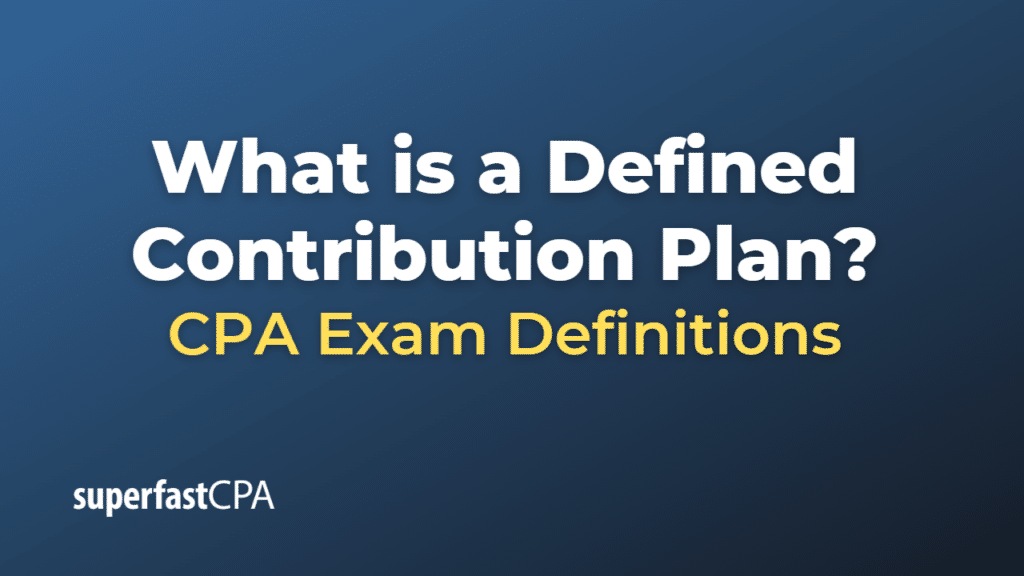Defined Contribution Plan
A Defined Contribution Plan is a type of retirement plan where an individual’s savings for retirement are accumulated in a personal account. The final amount available for retirement depends on the contributions made into the account by the individual and/or their employer, as well as the performance of the investments made with those contributions over time.
One of the most common types of defined contribution plans is a 401(k) plan, offered by many employers in the United States. Other examples include 403(b) plans for non-profit employees, Individual Retirement Accounts (IRAs), and 457 plans for governmental employees.
In a defined contribution plan:
- The individual (employee) typically makes pre-tax contributions from their paycheck into the plan. Some plans also allow for after-tax contributions.
- Often, the employer will match a portion of the employee’s contributions, up to a certain limit.
- The contributions are invested, often in a selection of investment options provided by the plan. This could include a range of mutual funds, index funds, target-date funds, and potentially individual stocks and bonds.
- The individual bears the investment risk. This means the value of the account can go up or down based on investment performance.
- Upon retirement, the individual has access to the funds in the account, which by then ideally have grown significantly through investment returns.
The main difference between a defined contribution plan and a defined benefit plan (like a traditional pension) is who bears the investment risk. In a defined contribution plan, the individual bears the risk and the retirement income depends on the investment performance. In a defined benefit plan, the employer bears the risk and promises a specific retirement income regardless of investment performance.
Example of a Defined Contribution Plan
Let’s consider an example of a defined contribution plan:
John is an employee at a company that offers a 401(k) plan, a common type of defined contribution plan. John decides to contribute 6% of his $50,000 annual salary to the 401(k). This means he contributes $3,000 to his 401(k) account each year.
John’s employer offers a 50% match on contributions, up to 6% of his salary. This means the employer also contributes an additional 50% of the $3,000 John contributed, or $1,500, each year.
So, in total, $4,500 ($3,000 from John and $1,500 from his employer) goes into John’s 401(k) account each year.
These contributions are then invested in a selection of mutual funds that John has chosen within his 401(k) account. The total amount in John’s 401(k) at retirement will depend on the performance of these investments over time.
If the investments perform well, John could end up with a substantial sum in his 401(k) when he retires. However, if the investments perform poorly, the amount could be less than expected. In a defined contribution plan like this, the investment risk is on John, the employee, not the employer.
This is a simplified example, and actual 401(k) plans can be more complex, with rules about when and how you can withdraw money, tax implications, and other factors. It’s also important to note that contribution limits and matching amounts can vary by employer and plan.













